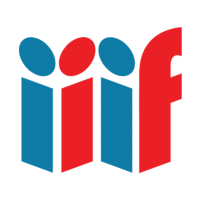The International Image Interoperability Framework (IIIF) defines universal standards for describing and delivering images over the web, and is the result of collaborative efforts across universities, museums, libraries, and other cultural heritage institutions around the world. The framework specifies two APIs, one for image retrieval and one for image display, discussed in detail below. Institutions that provide IIIF endpoints for their materials are able to share these materials with anyone worldwide using a IIIF-compatible viewer. This provides an unprecedented level of exposure for archives and repositories.
IIIF Image API
The IIIF Image API specifies a web service that returns an image in response to a standard HTTP or HTTPS request. The URI can specify the region, size, rotation, quality characteristics and format of the requested image. A URI can also be constructed to request basic technical information about the image to support client applications. This API was conceived of to facilitate systematic reuse of image resources in digital image repositories maintained by cultural heritage organizations. It could be adopted by any image repository or service, and can be used to retrieve static images in response to a properly constructed URI.
[Read the full documentation here.]
Unique URIs can be used to call image data from the server. A few examples are below:
IIIF Image API Demo
-
SERVERhttps://ids.lib.harvard.edu/
-
PREFIXids/iiif/
-
IDENTIFIER25286607/
-
REGION
-
SIZE (px)
-
ROTATION
-
QUALITY
-
FORMAT

IIIF Crop Tool
IIIF can be used to easily crop images. This implementation uses Leaflet-IIIF.
IIIF Presentation API
The role of the IIIF presentation API is to describe a digital object that may contain hundreds of images in such a way that the user and the viewer software can successfully navigate the object (via the manifest resource), the order in which individual surfaces or views are presented (the sequence resource), and the individual surfaces or views (canvas resources). Each canvas may have images and/or other content resources associated with it (content resources) to allow the view to be rendered. An object may also have parts; for example, a book may have chapters where several pages may be associated with a single chapter (a range resource) or there may be groups of content resource above the page level, such as all of the texts that make up a single edition of a book (a layer resource). These resource types, along with their properties, make up the IIIF Presentation API.

